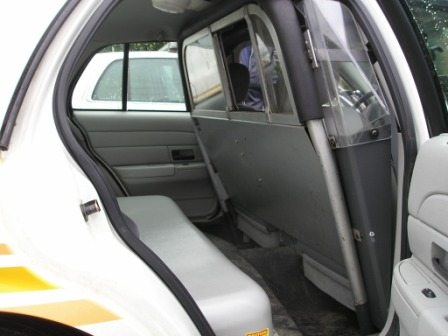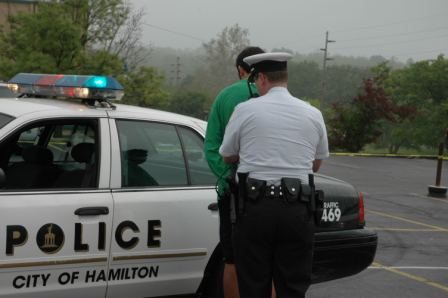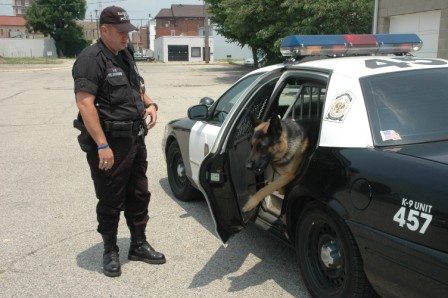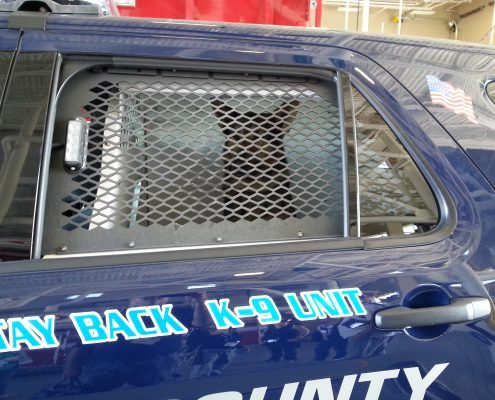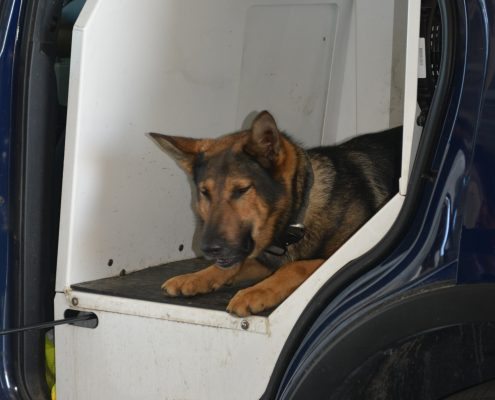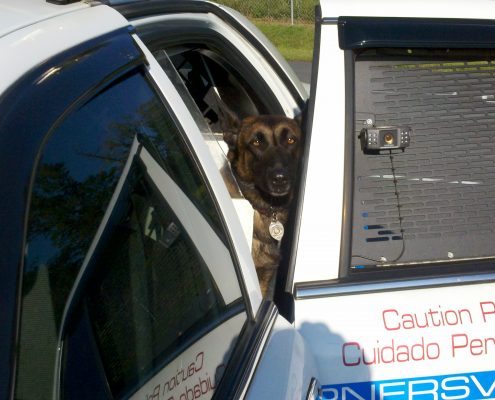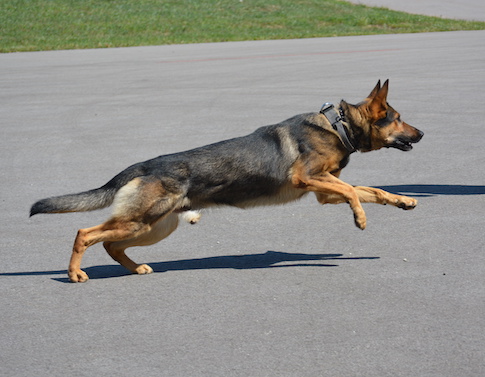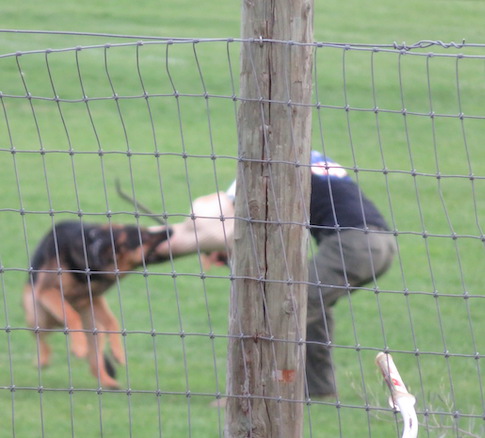I’m currently working an extremely dangerous undercover assignment in a massive dog-fighting ring, but I’ve blown my cover to speak with you today about a very important subject—K-9 handlers.
Please feel free to call me “Dawg.” Not my real name, of course. But I’ll answer to it, especially if there’s a treat or my favorite toy in your hand.
I’ve risked exposing my true ID because, well, sometimes you guys, dog handlers and civilian pet owners, don’t use your heads. I’m not saying you’re stupid. Although, it’s no secret who’s on the “smart end” of the leash. The instructor at the state police academy who trained the guy writing this blog stressed that fact every single day for 16 long and grueling weeks. “Your dog is on the smart end of the leash, troopers. Let the dog lead the way,” he’d say. That was one intelligent state police lieutenant.
He’s right, you don’t think before you act and you thinking you know it all causes us, the K-9s, to look dumb. Let. Us. Do. Our. Jobs. We’re really good at what we do.
Another thing. Seriously, you think it’s okay to leave us in the car while you’re outside standing in the shade yucking it up with your buddies? We enjoy a good joke too. Besides, the grass feels wonderful on our feet. And don’t think I can’t smell the burgers and fries on your breath when you get back inside the bucket of bolts you so proudly call a police car. Nearly an hour inside Mickie D’s …. puhleeze …
And, remember that traffic stop last week? Yeah, you know the one. I know you only issued her a warning. But I’m not stupid. I get it. She batted her eyelashes at you and she smelled like jasmine. What I don’t understand, though, is why you didn’t you introduce me to the poodle riding shotgun. You know I’m a sucker for curly hair. Life is not all about you and your shiny badge and big gun, you know.
Anyway, our union, Police Dogs 101, recently elected me to serve as official spokesdog, so I’m here today to address a few of our concerns in advance of the upcoming contract renewal. It wouldn’t hurt private citizens to pull up a chair and listen as well. So here goes. I suggest you take notes.
1. We notice that you wear shoes to work every single day of your life. And we know why. Oh, boy, do we know why! Snow and ice are COLD. Concrete and asphalt are HOT. And, for goodness sake, would you walk barefoot over broken glass? Well, no one, including dogs, should be forced to walk on those surfaces. So take your narrow hips to the store and buy us some booties! They make and sell them every day. We don’t mind looking goofy if it means protection against frostbite, blisters, or cuts. Use your head, you Sherlock wannabe.
2. We enjoy biting a bad guy as much as any dog, but our internal temperatures can skyrocket while tracking and searching on really hot days. That’s right, Ace, you try wearing a thick fur coat in the August sunshine. So keep one of those thermometer things in your pocket. No, we don’t enjoy it when you poke them into the place where the sun doesn’t shine, but it’s better than keeling over from heat exhaustion. We’d do it ourselves, but … no fingers, you know.
3. Another good idea, and goodness knows you’d never think of it, is to wet us down before a search on hot days. It helps keep us cool. But, please, not when the humidity is really high, because the water in those instances would only serve to hold the heat in.
4. Bring plenty of water with you if the search is going to be a long one. We don’t like drinking from mud puddles and creeks. Do you know what’s been there? Well, we do, and it’s not exactly the most sanitary thing to do. Would you drink from something that turtles and frogs use as a toilet? I didn’t think so. And let’s not even think about all the mosquito larvae swimming and squirming around in those places. Gives me goosebumps just thinking about it. Do us both a favor and bring along clean water!
Speaking of water … how about changing the water in my bucket a few times during the day (the containerl in my kennel)? You know me, I drool in it, and even sometimes step in it to cool my hot feet (and you know where my feet have been). Besides, I don’t like tasting the green slimy stuff that can build up in the bowl/bucket if the water sits for a long time.
5. If you do insist upon leaving me in the car while you’re off doing who knows what (probably biting someone behind my back), then please have the decency to leave the car and air conditioning running. Also, have the motor pool mechanics install an alarm that notifies you if either of the two malfunctions or shuts off. Remember, I don’t have fingers to operate the power locks and those window roller-downer-things.
6. Shade. I can’t stress this enough. We want our kennels placed in the shade. If your yard is treeless (heaven forbid) then march your butt down to the hardware store and purchase a roll or two of shade cloth to place over the top of our kennels. It’s an easy project. We’ll even help, if you want. If so, merely place the roll near us and I promise we’ll have it unrolled and divided into bite-size pieces in no time flat. Now that’s what we call fun.
7. Speaking of fun … we demand a few hours of play time each day. You cannot expect us to work every minute. Throw something for us to retrieve. Hide something and let us find it. Let us roll around in the dirt, etc. Tug of war with a rope or our favorite toy. Anything like that will suffice. Besides, it helps to keep us fit.
My friend Ralph (below), poor guy, has a handler who never allows him any exercise time at all. Take a good look, because you’ve been a bit slack lately and I’m now about five tennis ball throws away from looking like him.
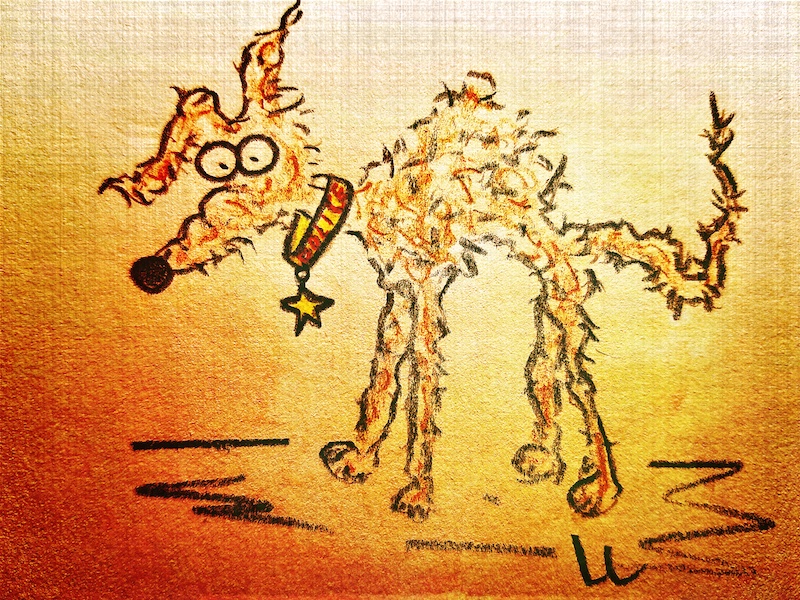
K-9 Ralph
8. And whatever you do, please don’t forget to tell us what a great job we’re doing. We absolutely adore praise for a job well done. Also, a little loving goes a long way.
Don’t go getting all mushy on me, though. A pat on the head and back and an occasional hug is all we’re asking. You can save the kisses for your spouses. Besides, you have more germs in your mouth than I do, and I’ve been known to chew on some pretty nasty stuff.
Okay, that’s it for now. We look forward to your response in advance of our next meeting.
By the way, if you happen to see that poodle again, tell her to give me a call.








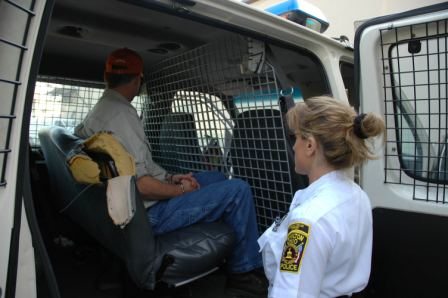
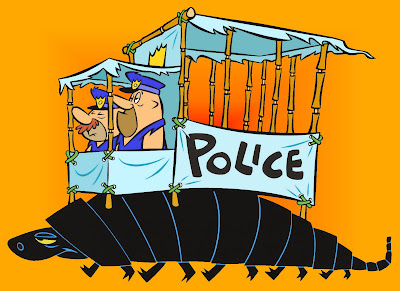
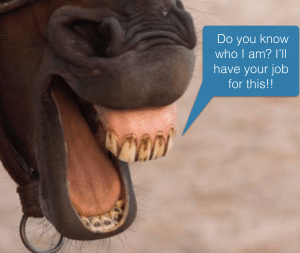 Of course, the violent kicking of the doors, windows, and cage, and the screaming, spitting, and peeing everywhere like a spurting, spraying backyard lawn sprinkler, combined with the constant barrage of blaring radio traffic and wailing and yelping sirens, all join together to ensure a safe, smooth, and distraction free ride to the jail. This soothing, ambiance helps to settle an officer’s nerves after struggling for twenty minutes to handcuff the intoxicated violent wife-killing, puking, window-kicker.
Of course, the violent kicking of the doors, windows, and cage, and the screaming, spitting, and peeing everywhere like a spurting, spraying backyard lawn sprinkler, combined with the constant barrage of blaring radio traffic and wailing and yelping sirens, all join together to ensure a safe, smooth, and distraction free ride to the jail. This soothing, ambiance helps to settle an officer’s nerves after struggling for twenty minutes to handcuff the intoxicated violent wife-killing, puking, window-kicker.